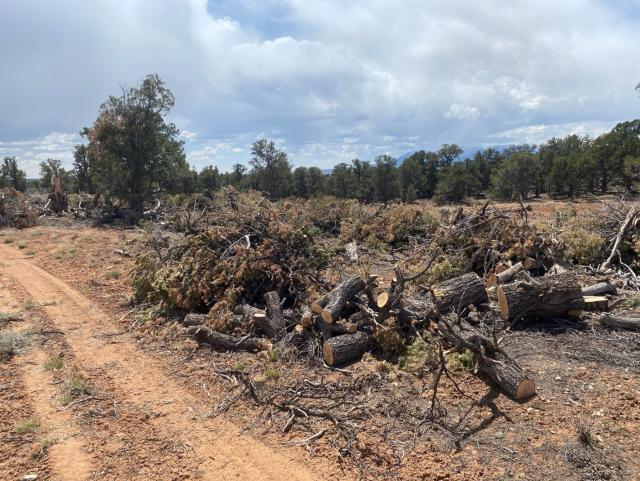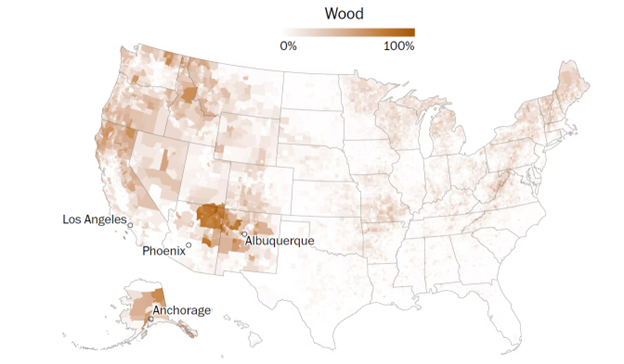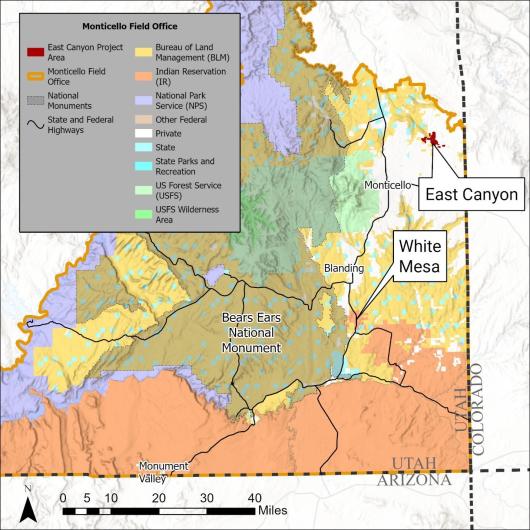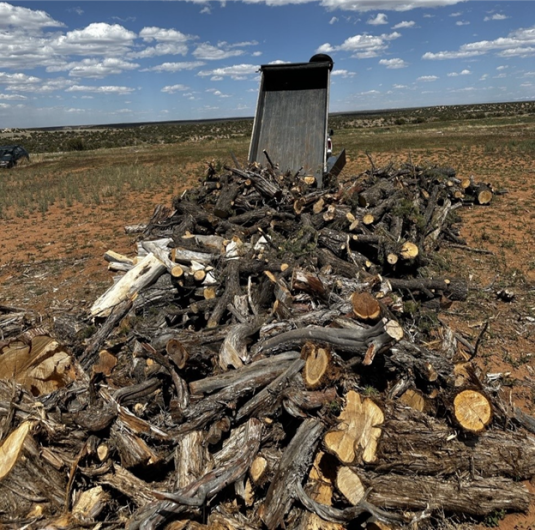You are viewing ARCHIVED content published online before January 20, 2025. Please note that this content is NOT UPDATED, and links may not work. Additionally, any previously issued diversity, equity, inclusion or gender-related guidance on this webpage should be considered rescinded. For current information, visit https://www.blm.gov/blog.
Kindling connections with fire fuels
What do vegetation management, prescribed burns, and local communities have in common — a kindling connection...
When folks from the Bureau of Land Management decide how best to, well, manage the land, there are MANY factors at play. For example, when surveying areas for prescribed burns, many priorities get factored in: Are there other native plants that we can help regain a foothold in areas where they have been outcompeted by pinyon and juniper? What combination of landscapes support the most diverse wildlife? If trees will be cut back, what can be done to have the most positive impact for the land, wildlife, and people?
The BLM routinely treats landscapes through prescribed burns and thinning trees to allow for other plant life to reestablish, like sage — bringing them back into their historic ranges. This allows the agency to meet specific goals for managing the lands BLM stewards, while also providing an opportunity to support the local community.
In Utah’s Canyon Country District, the East Canyon Project, which focused on habitat improvement for mule deer and the threatened Gunnison sage grouse, included one more novel benefit: providing wood for home heating, cooking, and other uses, to residents of San Juan County including Ute and Navajo lands.
An ecological benefit
The project included removing small diameter pinyon and juniper from sagebrush-steppe ecosystems that have historically been prime habitat for deer and grouse. However, the lack of disturbance, such as fire, has allowed pinyon and juniper forest to encroach into open sagebrush areas that are vital to these animals. In addition to the wildlife benefits, reducing the density of pinyon and juniper trees in the area lowers wildfire risk and allows more effective firefighting tactics.

Treatment methods
To counteract the encroachment of pinyon and juniper into sage flats, the Canyon Country District utilized several different methods to thin the forests. First, along the border of the densest stands of trees, crews used machinery that grinds trees into mulch, or as it is called in the fire fuels business: mastication. In existing sage flats where trees were less dense, crews used chainsaws to cut out the younger sprouts.

A unique third prescription was used where roads passed through the treatment unit. For 50 feet on either side of the road, crews hand cut trees and buck them into firewood size logs. Branches that were too small to be used as firewood were placed into piles for use in prescribed burns in the winter. The large rounds, well-suited for firewood, were stacked along the side of the road. In all three treatment methods, old growth trees were left uncut.

Community benefit
While actions to reduce pinyon-juniper forest densities are common across the West, often the majority of wood and plant matter is left or burned on site. While mulched chips and branches can help reduce erosion and create habitat for small animals, insects, and microbes, there was still ample wood for other uses.
With logs already cut and stacked along designated roads, the public could easily collect the firewood that they didn’t have to cut and would have been inaccessible by car.
To support and encourage the local community to take advantage of the available wood, this project included reducing the cost of the firewood collection permit to a single dollar.
Fire fuel for Tribes
Heating homes and cooking with firewood is very common in the Four Corners region. Approximately 90% of households within the Hopi Tribe and Western Navajo Agency depend on firewood as their primary source of heating during the winter months.

The southern portion of the BLM Monticello Field includes multiple Tribally administered lands such as the Ute Mountain Ute community of White Mesa. Continuing south, the field office extends to the San Juan River which forms the northern border of the Navajo Reservation.

A helping hand
While making pre-cut firewood highly affordable and available to the public at the East Canyon site was helpful, there remained a significant barrier in getting the wood to communities who are furthest away — it is nearly 60 miles to drive from East Canyon to White Mesa, and another 20 miles to the closest point on the Navajo reservation.
To address the transportation issue, the Canyon Country District, which includes the Monticello Field Office, turned to an innovative partnership with the Utah Department of Wildlife Resources. Utah DWR runs a dedicated hunter program to encourage hunters to help with volunteer projects that benefit wildlife. As a reward, hunters who complete volunteer hours may earn a deer tag.
At the beginning of spring 2024, there were no volunteer projects for dedicated hunters in Southeast Utah. The BLM proposed to have dedicated hunters transport firewood from East Canyon to a newly established wood bank in White Mesa. The response was immediate. Within the first month, 31 volunteers had delivered over 46 cords of wood to the wood bank — and deliveries continue!
Jack Cantsee of the Ute Mountain Ute Tribe has been managing the wood bank in White Mesa. He estimated that there has already been enough wood delivered to last a whole season for the community! Over 250 acres of the East Canyon project were treated to provide firewood and only a fraction of that wood has been collected so far.

A continuing effort
Using vegetation treatments to provide firewood to tribal communities was a first for the Canyon Country District. In many ways, providing firewood in addition to improving habitat and reducing hazardous fuels is a win-win. While it may take more effort to cut and pile firewood by roads, it fills a public need in a sustainable manner.
Planning efforts ensured that work was intentionally done with the goal to minimally affect cultural sites and wildlife. BLM manages the traditional lands of Indigenous peoples, made particularly clear by the abundance of cultural resources in the area. Best management practices should incorporate Traditional Indigenous Knowledge as well as meaningful relationships with Indigenous communities. The district looks forward to future fuels projects along with more cooperation and an increased capacity for transportation.
Jonathan Jew, GIS Specialist, Anna Rehkopf, Public Affairs Specialist
